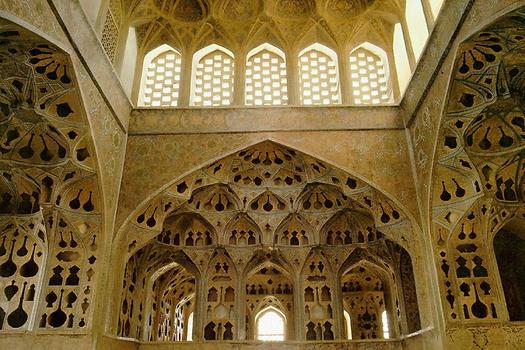Impressions of Iran, Part 3 (Isfahan)#
by H. MaurerIntroduction#
This report can be see as continuation of the trip described in Impressions of Iran, Part 1 and Impressions of Iran, Part 2 or as independent report on the famous city Isfahan. The larger part of the city of about 2 million is north of a major river, the Zayandehrud, but our visit starts with the Armenian church in the Djolfa-area south-west of the river. The bridges crossing the river are long and lit, hence are one of the big attractions at night. The city boasts one of the largest squares of the world, the Meydan-e Iman, with the Palace Ali Qapu on the western long side of the rectangular area, just opposite the private mosque Sheik Lottfollah, and with a good view towards the encredible assembly of the Masdjid-e Iman mosques (at the south end; shown as Naghsh-e Jahan in the map). However, there are many more attractions like the large complex of the Friday mosque (Jame-Moqsque), the Chehelstoon Palace and garden, the huge bazar, and more. The map below can be used to discover some of the above by zooming and moving it around.The Armenian church#
Around 1600 many Armenians moved into Isfahan since ther was quite a need for skilled labor. Some 30.000 settled. This Christian community is still quite alive today.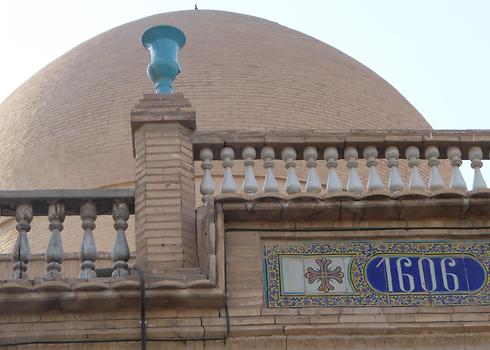
The Armenian church is part of the Vank cathedral, with a cupola looking almost like a mosque, just with a tiny cross instead of the half moon on top of it. Foto: U. and H. Maurer, under CC BY-SA 4.0
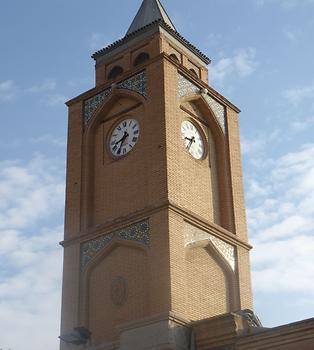
Tower of church, Foto: U. and H. Maurer, under CC BY-SA 4.0
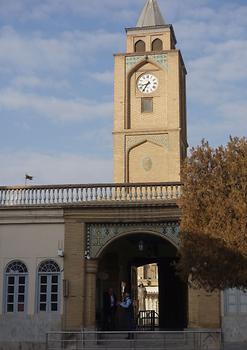
Tower of church, Foto: U. and H. Maurer, under CC BY-SA 4.0
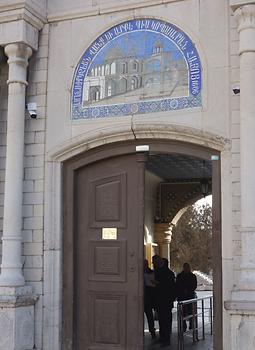
One of the entrances to the inner square, Foto: U. and H. Maurer, under CC BY-SA 4.0
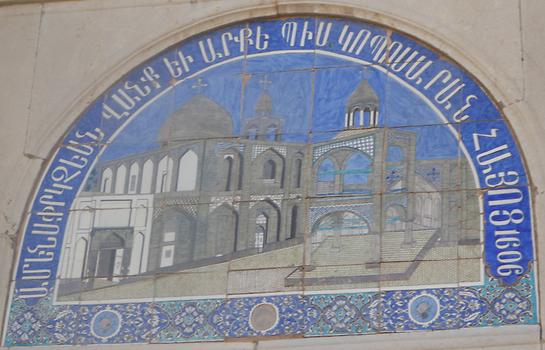
Armenian inscription, Foto: U. and H. Maurer, under CC BY-SA 4.0
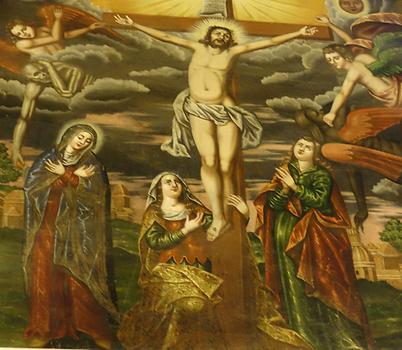
Inside the church, Foto: U. and H. Maurer, under CC BY-SA 4.0
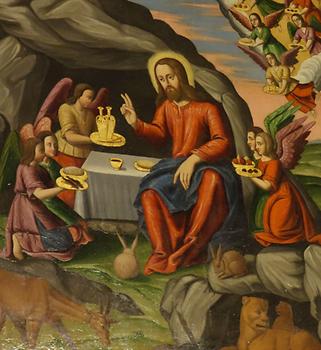
Inside the church, Foto: U. and H. Maurer, under CC BY-SA 4.0
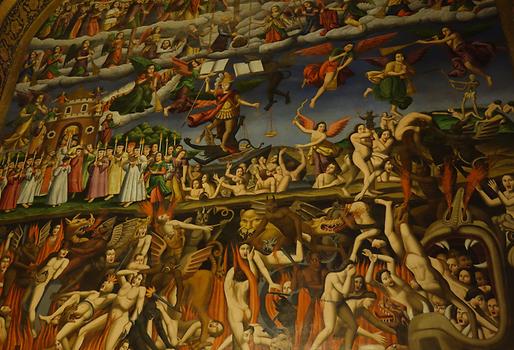
Inside the church, Foto: U. and H. Maurer, under CC BY-SA 4.0
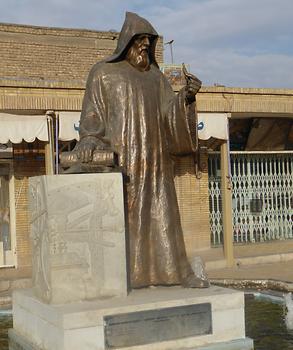
Archbsihop Karchatour Kesaratsi,responsible for the construction of the Armenian chruch in 1636, Foto: U. and H. Maurer, under CC BY-SA 4.0
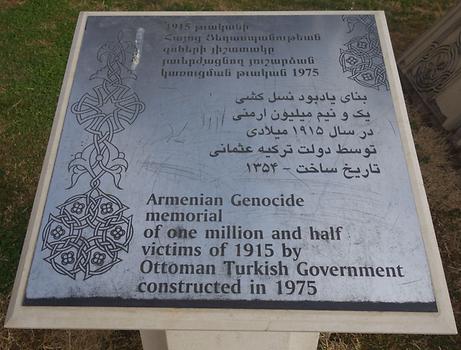
Genocide plaque, Foto: U. and H. Maurer, under CC BY-SA 4.0
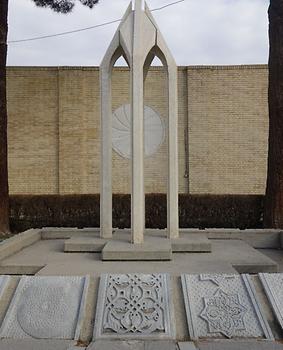
Genocide memorial next to plaque, Foto: U. and H. Maurer, under CC BY-SA 4.0
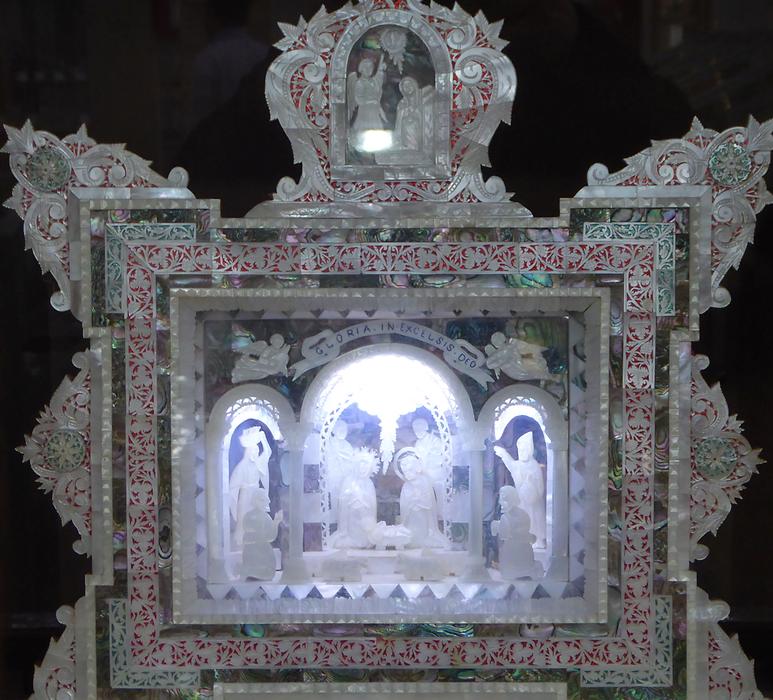
Beautiful manger from the museum next to Armenian church. Foto: U. and H. Maurer, under CC BY-SA 4.0
Friday mosque (Masjed-e Jame mosque)#
Located at the north end of the bazar it has a huge inner courtyard, surrounded by mosques, medreses (schools of Islam) and other buildings. The medrese on one side was hit by bombs in the Iran- Iraque war and has not been restored, possible on purpose so Iranians do not forget that Iraq is an enemy. The other buildings around the big inner courtyars are intct and beautiful.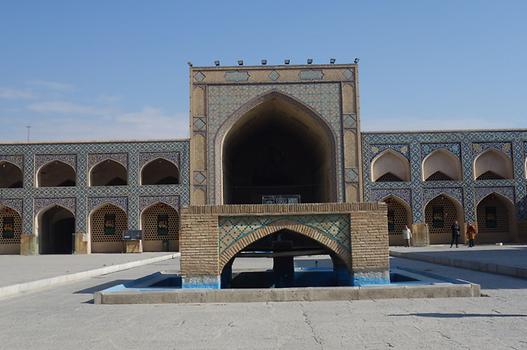
Small part of the beautiful interior courtyard. Foto: U. and H. Maurer, under CC BY-SA 4.0

Medrese, not in use, Foto: U. and H. Maurer, under CC BY-SA 4.0

Medrese, not in use, Foto: U. and H. Maurer, under CC BY-SA 4.0
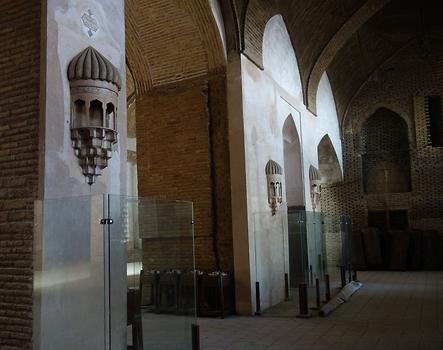
Medrese, not in use, Foto: U. and H. Maurer, under CC BY-SA 4.0
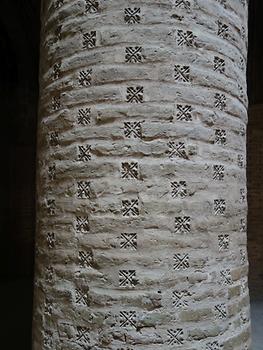
Nicely decorated olumn, Foto: U. and H. Maurer, under CC BY-SA 4.0
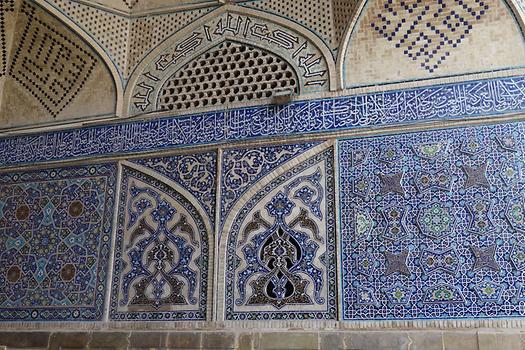
Some part are still intact, Foto: U. and H. Maurer, under CC BY-SA 4.0
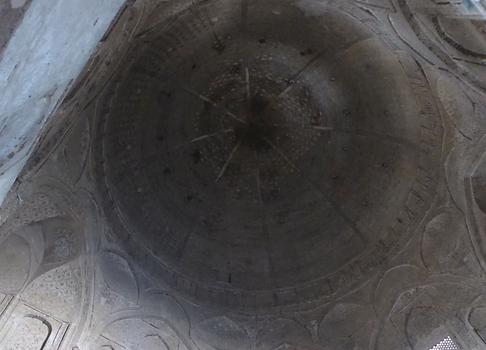
Others are blackened by fire caused by bombs. Foto: U. and H. Maurer, under CC BY-SA 4.0
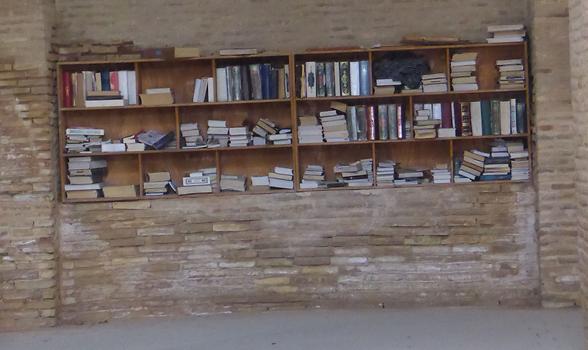
The library was destroyed. Foto: U. and H. Maurer, under CC BY-SA 4.0
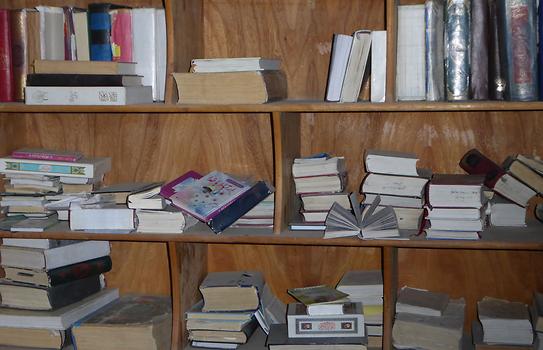
And nobody seems to take care of the remaining books. Foto: U. and H. Maurer, under CC BY-SA 4.0
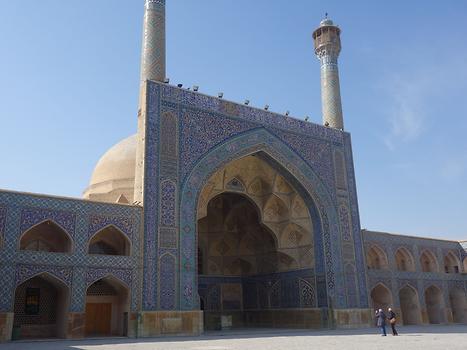
Mosque; Foto: U. and H. Maurer, under CC BY-SA 4.0
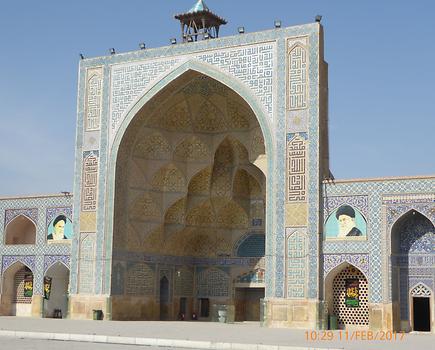
Main entrance, Foto: U. and H. Maurer, under CC BY-SA 4.0

Main entrance, Foto: U. and H. Maurer, under CC BY-SA 4.0

Entrance, Foto: U. and H. Maurer, under CC BY-SA 4.0
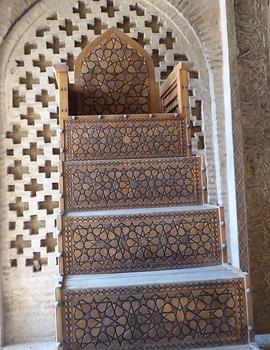
Inside mosque, Foto: U. and H. Maurer, under CC BY-SA 4.0
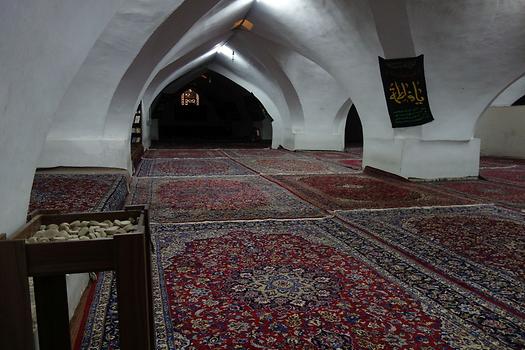
Prayer area, Foto: U. and H. Maurer, under CC BY-SA 4.0
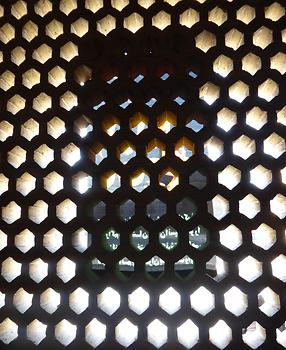
Foto: U. and H. Maurer, under CC BY-SA 4.0
Meydan-e Iman: Main square and buildings around it#
Ali Qapu Palace#
The name means somethin like "imperila" or "great". It is forty-eight meters high and there are six floors, each accessible by a difficult spiral staircase. It was built by order of Shah Abbas I in the early seventeenth century.
Frontal view of Palace, Foto: Dieof Deslo, September 2016 in Wikipedia, under CC BY-SA 4.0
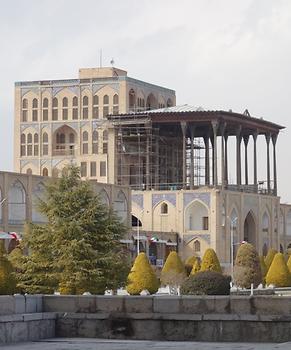
View of palace from the side, Foto: U. and H. Maurer, under CC BY-SA 4.0
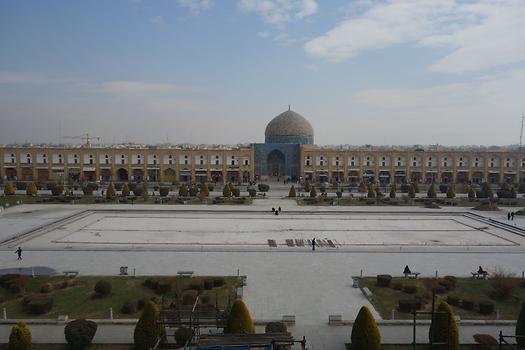
View from palace across the square to Sheik Lotfollah mosque; the pool is emtpy during winter months. Foto: U. and H. Maurer, under CC BY-SA 4.0
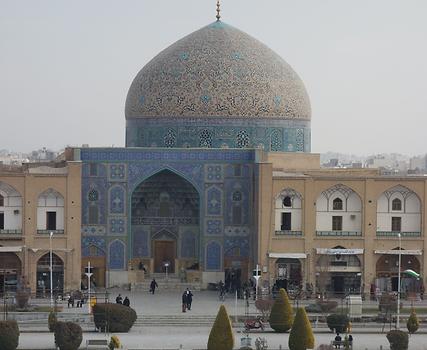
Close up of Sheik Lotfollah mosque. it was a private mosque with an underground passage leading from the palace to a prayer room for women one level below the main floor, to allow women to attend prayers without beeing seen in public. Foto: U. and H. Maurer, under CC BY-SA 4.0
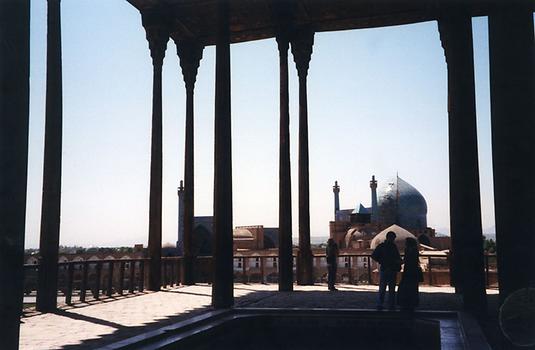
View of Sheik Ltofoollah mosque from palace. Foto: Jeanne Menj, April 1999 from Wikipedia, under CC BY-SA 2.5
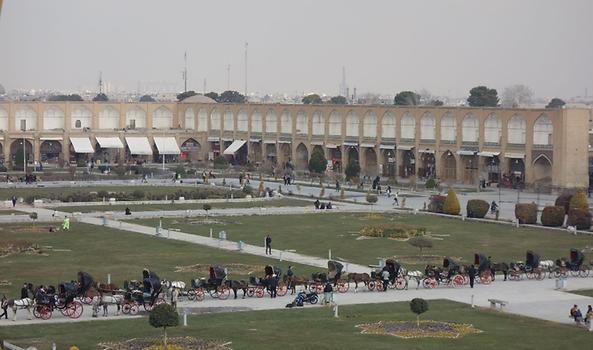
View across square, direction bazar, Foto: U. and H. Maurer, under CC BY-SA 4.0
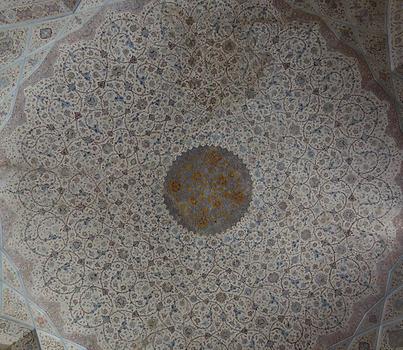
Ceiling, Foto: U. and H. Maurer, under CC BY-SA 4.0

Ceiling, Foto: U. and H. Maurer, under CC BY-SA 4.0
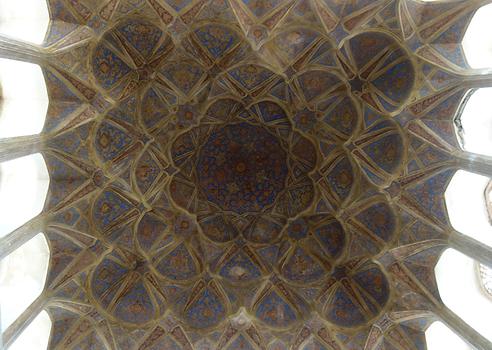
Ceiling, Foto: U. and H. Maurer, under CC BY-SA 4.0
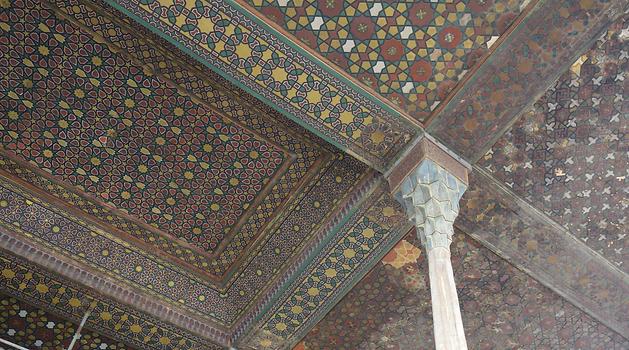
Ceiling, Foto: U. and H. Maurer, under CC BY-SA 4.0
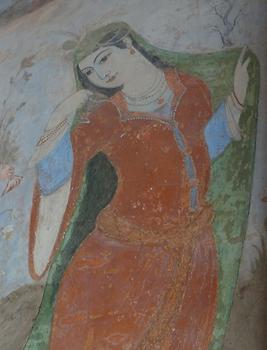
Painting in the palace, Foto: U. and H. Maurer, under CC BY-SA 4.0

Painting in the palace, Foto: U. and H. Maurer, under CC BY-SA 4.0
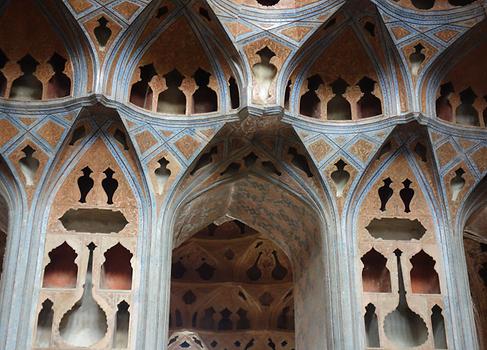
Decorated ceiling, Foto: U. and H. Maurer, under CC BY-SA 4.0
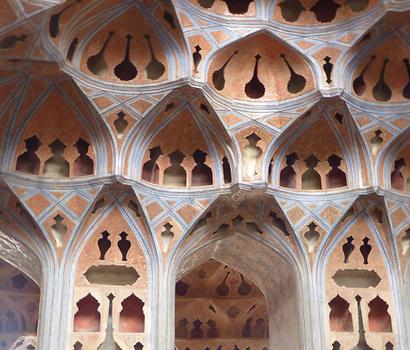
Decorated ceiling, Foto: U. and H. Maurer, under CC BY-SA 4.0

Decorated ceiling, Foto: U. and H. Maurer, under CC BY-SA 4.0
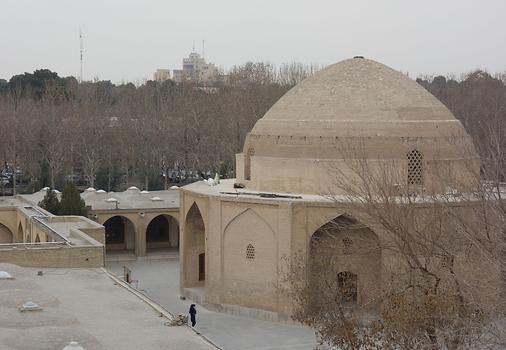
View from backside of palace, Foto: U. and H. Maurer, under CC BY-SA 4.0
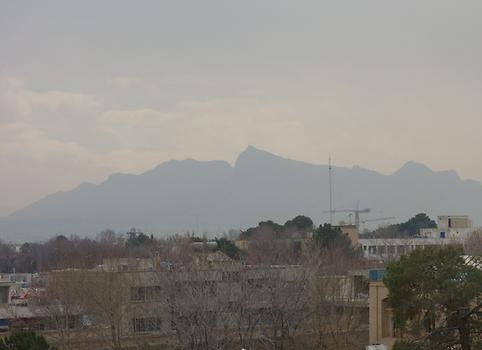
View from balcony of palace towards the mountains, Foto: U. and H. Maurer, under CC BY-SA 4.0
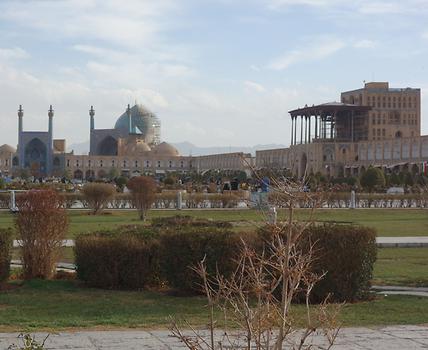
Evening view across square to Masdjid-e Iman mosque with palace on the right, Foto: U. and H. Maurer, under CC BY-SA 4.0
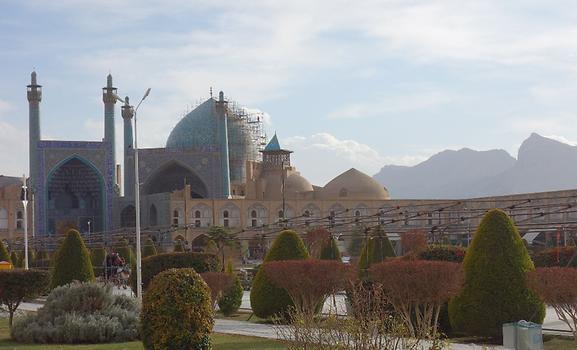
Evening view across square to Masdjid-e Iman mosque with mountains in the background, Foto: U. and H. Maurer, under CC BY-SA 4.0
Masdjid-e Iman mosque#
This mosque (called Shah mosque before the Islamic revolution) was built by and during the reign of Shah Abbas I ("The Great") starting in 1612. It is located in a large walled area, sorrounding mosque and gardens. What makes it very unusual is that the large "outer" iwan (entrance) aligned with the square with two minaretes, but then ones turns a corner to reach the mosque proper which is, at it must, facing towards Mekka. This is clearly recognizable in the first picture below.
View of the outer entrance, and the entrance of the mosque, placed at an angle. Foto: Patrickringgenberg, 2009 from Wikipedia, under CC BY-SA 3.0
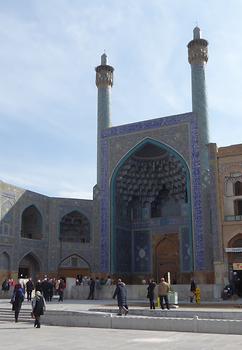
Entrance from square, Foto: U. and H. Maurer, under CC BY-SA 4.0
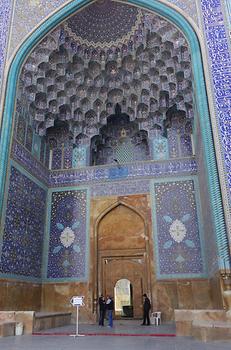
Entrance from square, Foto: U. and H. Maurer, under CC BY-SA 4.0
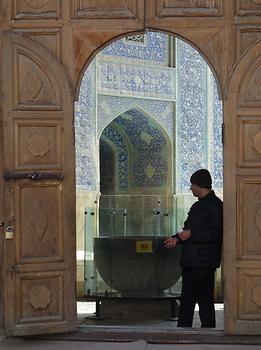
Here is the turn to right to aling the mosque properly. Foto: U. and H. Maurer, under CC BY-SA 4.0
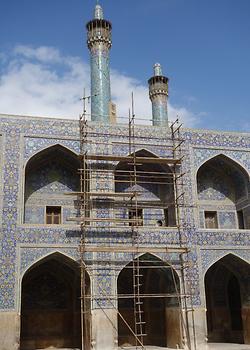
The mosque, Foto: U. and H. Maurer, under CC BY-SA 4.0
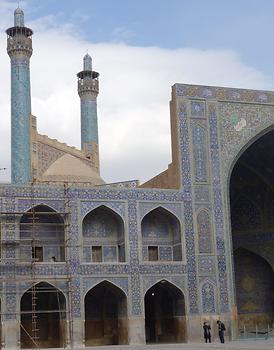
The mosque, Foto: U. and H. Maurer, under CC BY-SA 4.0
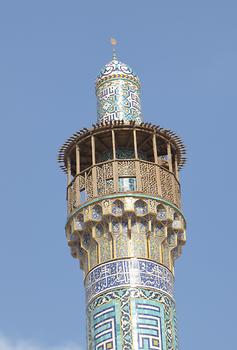
Minaret, Foto: U. and H. Maurer, under CC BY-SA 4.0
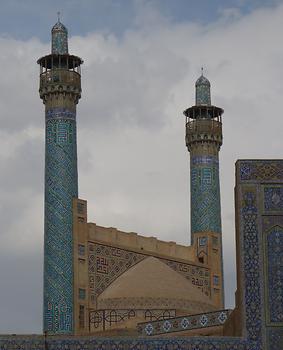
The mosque from the other side, Foto: U. and H. Maurer, under CC BY-SA 4.0
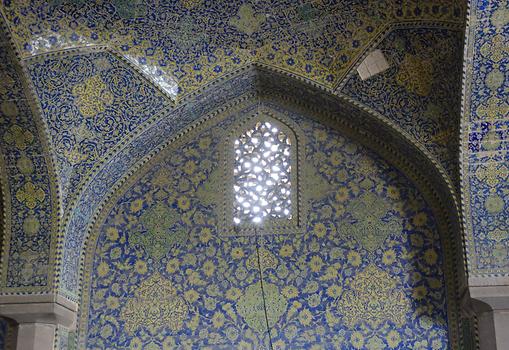
Inside mosque, Foto: U. and H. Maurer, under CC BY-SA 4.0

Garden with beautifully decorated walls. Foto: U. and H. Maurer, under CC BY-SA 4.0
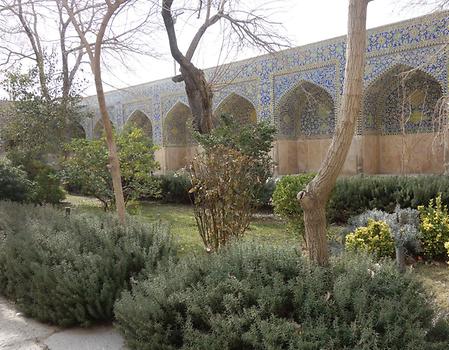
Garden with beautifully decorated walls. Foto: U. and H. Maurer, under CC BY-SA 4.0

Garden with beautifully decorated walls. Foto: U. and H. Maurer, under CC BY-SA 4.0
Sheik Lotfollah mosque#
This was a privat mosque opposite the palace. What makes it unusual is the ceilign of the main hall, soemn unusaul decoration and that ithas a large simpe prayer room one floor down, bascially for women form the palace, with an undergroudn tunnel connecting the two buildings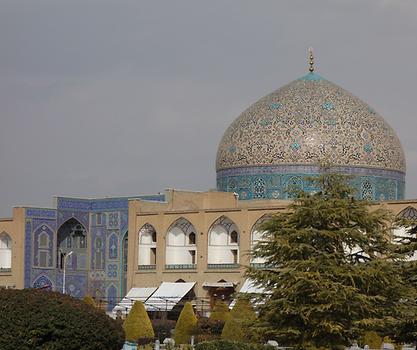
The mosque as seen from the square, Foto: U. and H. Maurer, under CC BY-SA 4.0
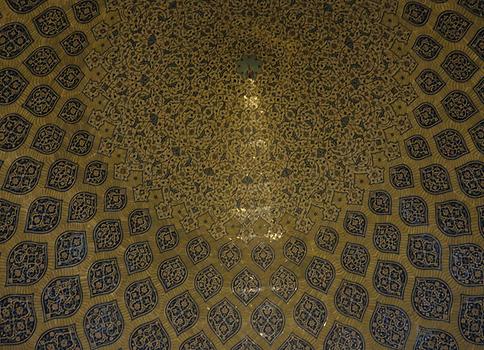
Inside mosque; a small peacock seems to iluminate a cone-shaped part of the ceiling, Foto: U. and H. Maurer, under CC BY-SA 4.0
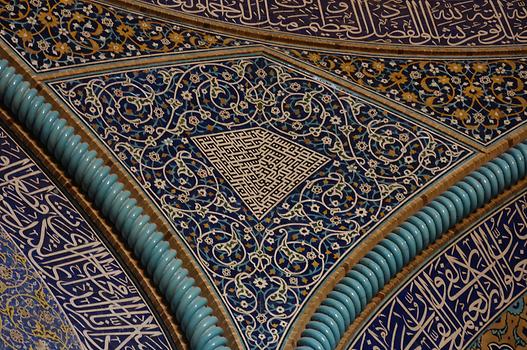
The usual kind of ceiling decoration, Foto: U. and H. Maurer, under CC BY-SA 4.0
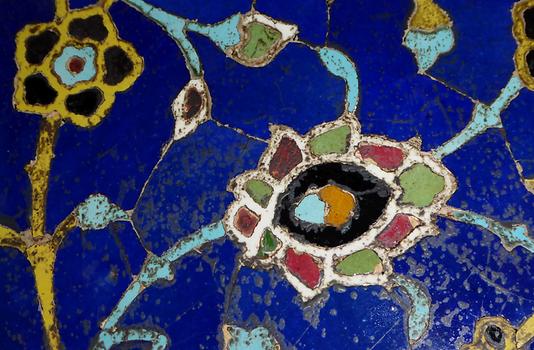
Unusual kind of decoration, Foto: U. and H. Maurer, under CC BY-SA 4.0
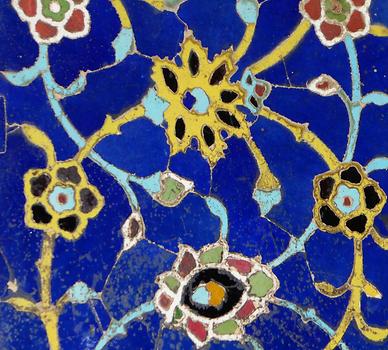
Unusual kind of decoration, Foto: U. and H. Maurer, under CC BY-SA 4.0
Chehelsotoon Palace and garden #
The construction of palace and garden started a bit before 1600. The arrangement is dominated by a large pool, reflecting the 20 columns of the reception hall: this is reportedly the reason for the term "Hall of 40 columns". The hall and large room behind it plus some smaller side areas were used for ceremonial receptions and festivities.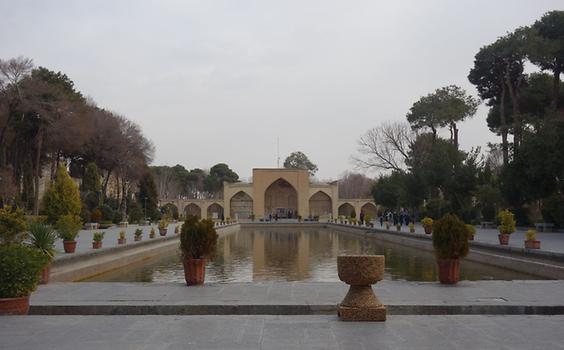
Pool and reception hall as seen when entering the site. Foto: U. and H. Maurer, 2017, under CC BY-SA 4.0

Closer look while walkign towards reception hall. Foto: U. and H. Maurer, 2017, under CC BY-SA 4.0

Roof with famous columns. Foto: U. and H. Maurer, 2017, under CC BY-SA 4.0
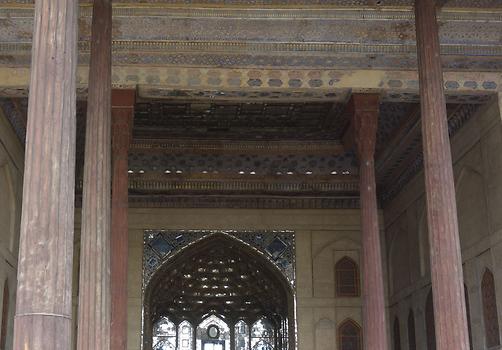
Roof with famous columns. Foto: U. and H. Maurer, 2017, under CC BY-SA 4.0
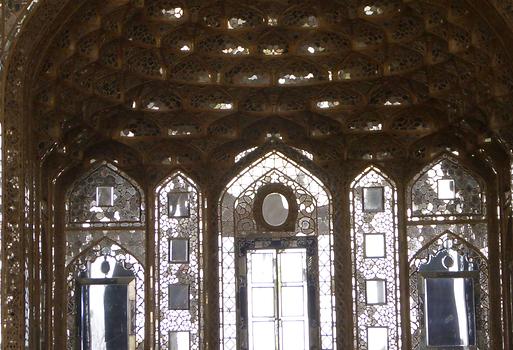
Upper part of entrance to main hall. Foto: U. and H. Maurer, 2017, under CC BY-SA 4.0
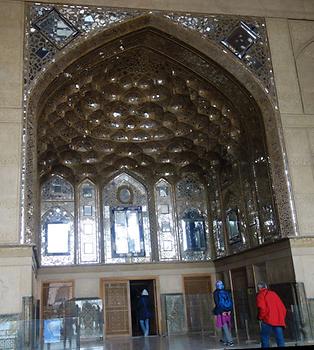
Entrance to main hall. Foto: U. and H. Maurer, 2017, under CC BY-SA 4.0
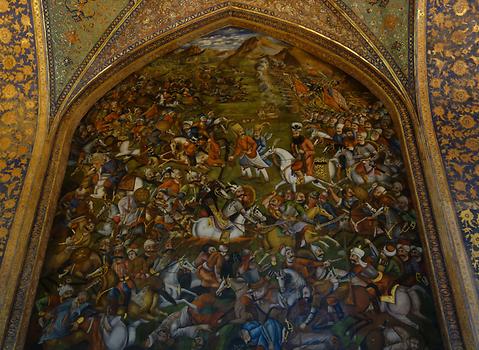
The frescoes are showing vrious battle scenes. Foto: U. and H. Maurer, 2017, under CC BY-SA 4.0
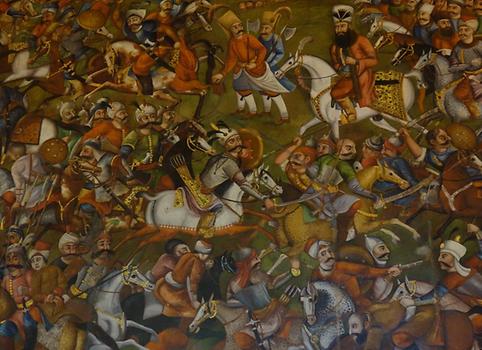
Detail of battel scene. Foto: U. and H. Maurer, 2017, under CC BY-SA 4.0

Ceiling. Foto: U. and H. Maurer, 2017, under CC BY-SA 4.0

Frescoe in side area, surprisingly including women with transparent blouses. Foto: U. and H. Maurer, 2017, under CC BY-SA 4.0
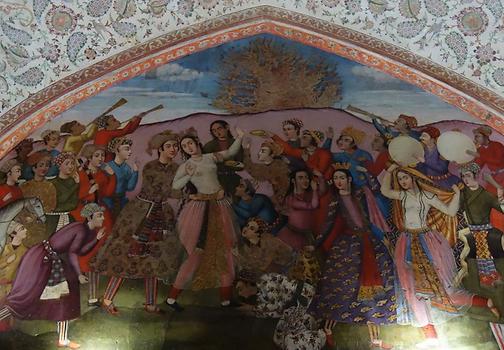
Frescoe in side area, surprisingly including women with transparent blouses. Foto: U. and H. Maurer, 2017, under CC BY-SA 4.0
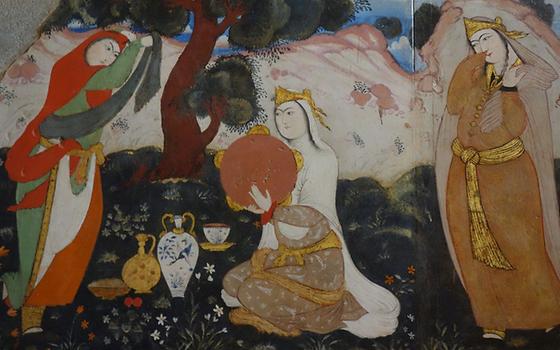
Frescoe in side area. Foto: U. and H. Maurer, 2017, under CC BY-SA 4.0
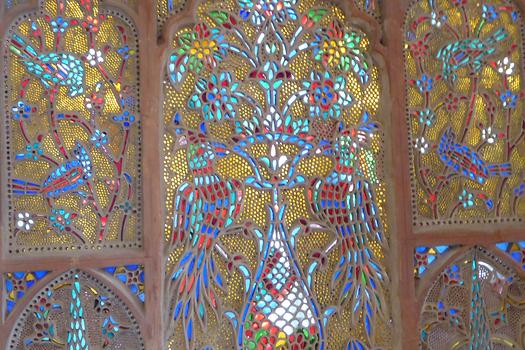
Window with decoration. Foto: U. and H. Maurer, 2017, under CC BY-SA 4.0

Looking into the garden from reception hall. Foto: U. and H. Maurer, 2017, under CC BY-SA 4.0
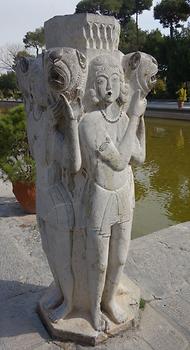
Guardians of pool and halls. Foto: U. and H. Maurer, 2017, under CC BY-SA 4.0
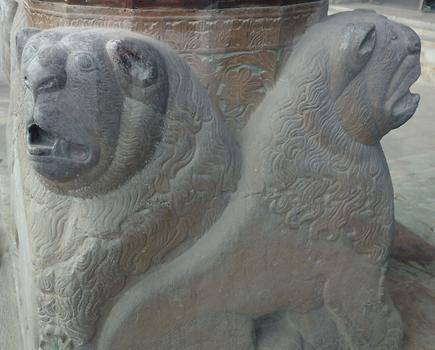
Guardians of pool and halls. Foto: U. and H. Maurer, 2017, under CC BY-SA 4.0
The bridges of Isfahan during night#
Half of Isfahan seems to be walking on or near the lit-up bridges, quite ready to chat with you, or take a rowing boat out into the river to enjoy the view of lights and the ripple of waves.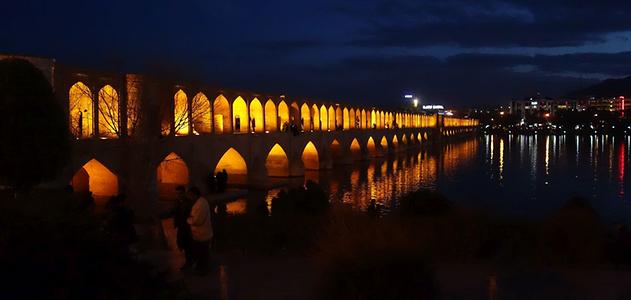
Bridge at night, Foto: U. and H. Maurer, 2017, under CC BY-SA 4.0
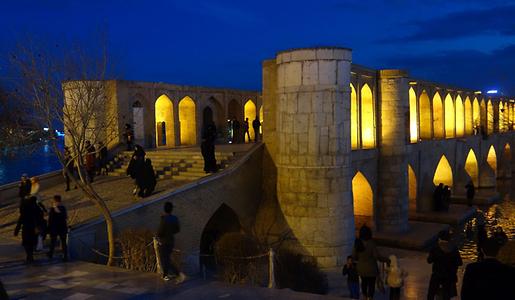
Bridge at night, Foto: U. and H. Maurer, 2017, under CC BY-SA 4.0
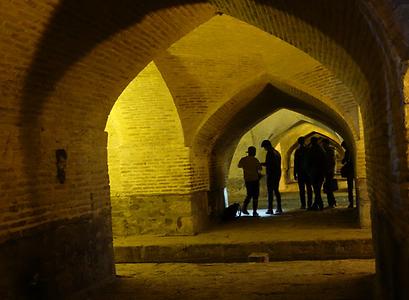
Bridge at night, Foto: U. and H. Maurer, 2017, under CC BY-SA 4.0
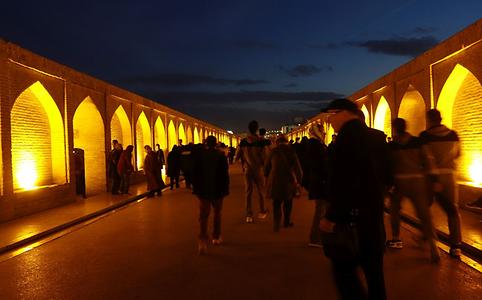
Bridge at night, Foto: U. and H. Maurer, 2017, under CC BY-SA 4.0
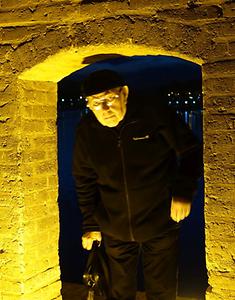
Non-native in a niche on a bridge at night, Foto: U. and H. Maurer, 2017, under CC BY-SA 4.0
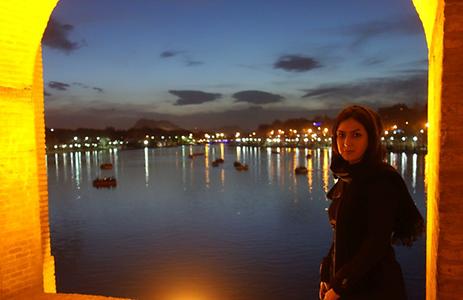
Native in a niche on a bridge at night, Foto: U. and H. Maurer, 2017, under CC BY-SA 4.0

Entertainment in rowing boats at night, Foto: U. and H. Maurer, 2017, under CC BY-SA 4.0
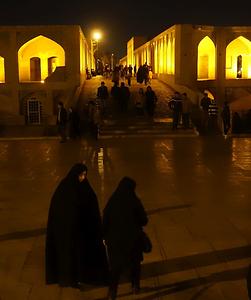
Bridge at night, Foto: U. and H. Maurer, 2017, under CC BY-SA 4.0
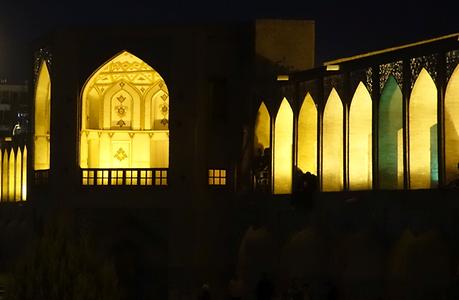
Bridge at night, Foto: U. and H. Maurer, 2017, under CC BY-SA 4.0
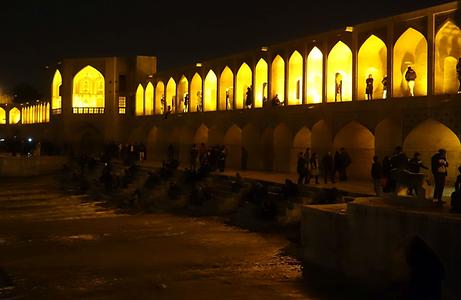
Bridge at night, Foto: U. and H. Maurer, 2017, under CC BY-SA 4.0
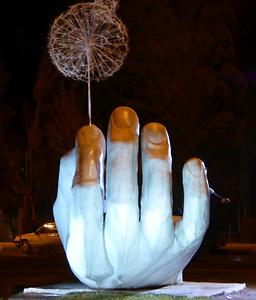
Symbol of freedom, Foto: U. and H. Maurer, 2017, under CC BY-SA 4.0

Bridge at night, Foto: U. and H. Maurer, 2017, under CC BY-SA 4.0
- Continue to Impressions of Iran, Part 4 (From Isfahan to Tehran)
- Continue to Impressions of Iran, Part 5 (Tehran)
- Back to Impressions of Iran, Part 1(Schiras and vicinity)
- Back to Impressions of Iran, Part 2(Yazd and Nain)
